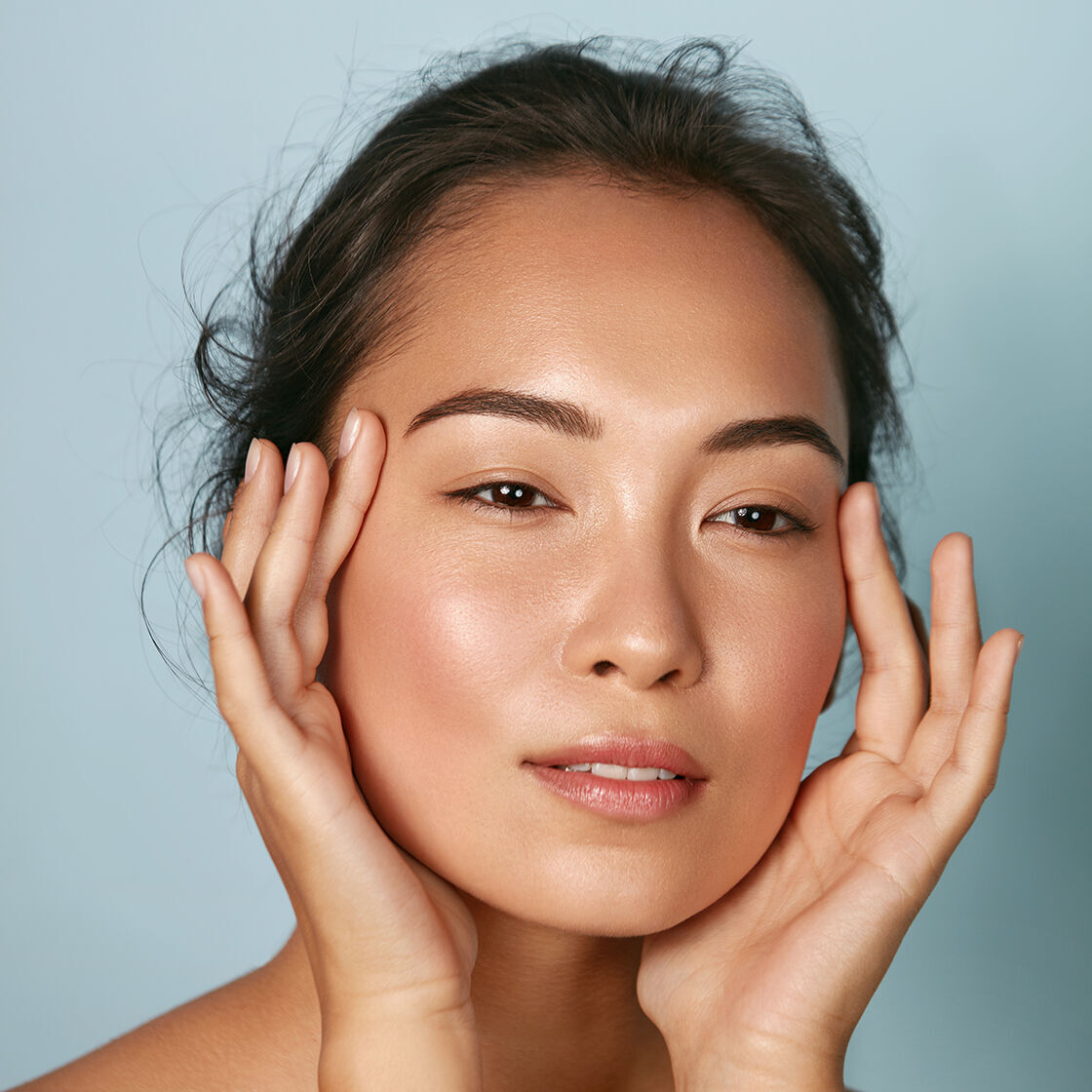
Can We Use Sunscreen in Monsoon?
Our daily skin care routine should always include sunscreen to help protect our skin from the harmful UV rays. Using sunscreen prevents our skin from tanning, wrinkles, premature ageing, sunburn, and even skin cancer. But then the question of the decade arises: 'Can we use sunscreen in the rainy season?'
Don't let the monsoon clouds fool you; UV rays still can reach your skin during the monsoon and cause damage. Sunscreens contain ingredients like zinc oxide and titanium dioxide that prevent the UV rays from penetrating the skin. By using sunscreen, you can effectively protect your skin from the harmful effects of UV rays even on cloudy days.
In this blog, we will explore why sunscreen matters even on rainy days, the science behind UV exposure through clouds, and how to choose and apply the right sunscreen for optimal skin health.

Why Sunscreen is Important During Monsoon
Even when the sun is not directly visible, its ultraviolet rays (UV rays) continue to affect your skin. UVA rays in particular, which cause premature ageing and pigmentation, are present year-round and can deeply penetrate clouds and glass.
Here's why sunscreen should be a non-negotiable part of your monsoon skin care routine:
- UV rays penetrate through clouds, glass, and even clothing.
- High humidity can cause sunscreen to wear off more quickly.
- Rain and sweat may wash away SPF protection, leaving skin vulnerable.
- Sensitive skin is especially prone to UV-triggered inflammation and irritation.
Effects of UV Rays on Cloudy Days
Penetration of UV Rays Through Clouds
- Clouds block visible light, but not UV radiation. Up to 80% of UV rays can penetrate cloud cover.
- UVA rays, which are responsible for long-term skin damage, penetrate more deeply than UVB rays.
- Continuous exposure to UVA rays can result in fine lines, pigmentation, and weakened skin elasticity.
Risks of Exposure Despite Overcast Skies
- The cooling sensation of rain often masks the damaging effects of UV radiation.
- Reflected UV rays from wet surfaces, like puddles or buildings, can amplify sun exposure.
- People with sensitive skin or fair complexion may experience flare-ups, redness, or burns without visible sunlight.
Benefits of Using Sunscreen in Rainy Season
Continuous Skin Protection
- A broad-spectrum sunscreen provides a protective barrier against both UVA and UVB rays.
- Ensures consistent protection for those spending time outdoors—even on rainy or cloudy days.
- Helps maintain even skin tone and healthy barrier function.
Prevention of Sun Damage and Ageing
- Daily application reduces the risk of photoaging, which includes dullness, pigmentation, and wrinkles.
- Prevents oxidative stress caused by UV radiation, which can damage collagen and elastin fibres.
- Reduces sun-induced sensitivity in already reactive or acne-prone skin
Reducing the Risk of Skin Cancer
- UV radiation is a leading cause of skin cancers, including melanoma, basal cell carcinoma, and squamous cell carcinoma.
- Consistent use of sunscreen is proven to lower the incidence of UV-induced skin malignancies.
- Water-resistant sunscreens further strengthen your defence during wet conditions.
Choosing the Right Sunscreen for Rainy Season
The best sunscreen for monsoon is one that stays effective despite humidity, rain, and sweat. Here's what to look for:
Water-Resistant Formulas
- Choose a water-resistant sunscreen that offers long-lasting protection even if you're caught in a downpour.
- Ideal for people who commute, walk outdoors, or sweat easily.
- Look for "sweatproof" or "sport" labelled options for added durability.
SPF and Broad-Spectrum Protection
- Opt for a sunscreen with SPF 30 or higher to ensure adequate UVB protection.
- Ensure it's broad-spectrum, which means it protects against both UVA and UVB rays.
- If you're indoors but near windows, SPF 30 is still essential as UVA rays pass through glass.
Ingredients to Look For
- Zinc oxide and titanium dioxide: Mineral-based, suitable for sensitive and acne-prone skin.
- Niacinamide: Soothes inflammation and improves skin barrier health.
- Hyaluronic acid or glycerin: Provide hydration while preventing dryness.
Choose Cetaphil Sun SPF 50+ Light Gel: Lightweight, oil-free, non-comedogenic, and water resistant, perfect for monsoon skincare.
How to Apply Sunscreen During Monsoon
Proper application is just as important as choosing the right product. Here's how to ensure your skin stays protected:
Reapplication Tips
- Reapply sunscreen every 2–3 hours if you're outdoors or near a window.
- After exposure to rain or sweat, reapply immediately, even with water-resistant formulas.
- Don't forget commonly missed areas: ears, neck, hands, and feet.
Complementing with Other Skincare Products
- Apply sunscreen as the final step of your daytime skincare routine.
- Layer over moisturizer to seal in hydration and strengthen the skin barrier.
- Choose products that are non-comedogenic and pH-balanced, especially if you have sensitive or oily skin.
Sunscreen Dos and Don'ts
Dos
- Use at least a nickel-sized amount for the face.
- Apply 15–20 minutes before sun exposure.
- Use even when indoors if exposed to indirect sunlight or digital screens.
Dont
- Skip sunscreen on cloudy days.
- Rely solely on SPF in makeup or moisturisers.
- Assume SPF lasts all day; reapplication is key.
Still unsure about which products to use during monsoon?
Use the Cetaphil AI Skin Analysis Tool for personalized product recommendations based on your skin type and concerns.
Conclusion
So, can we use sunscreen in the rainy season? The answer is a resounding yes. UV rays remain active even on the cloudiest days, making daily sunscreen application crucial for protecting your skin from damage, ageing, and long-term health risks.
A reliable, broad-spectrum, water-resistant sunscreen is your best defence, especially one that's formulated for sensitive or oily skin, like those from Cetaphil. Combine it with a holistic skincare routine that suits the monsoon's unique challenges.
Key Takeaways:
- Sunscreen is essential even during cloudy, rainy days.
- Choose SPF 30+, broad-spectrum, and water-resistant formulas.
- Reapply every 2–3 hours for consistent protection.
- Pair sunscreen with gentle cleansers and hydrating moisturisers.
- Use dermatologist-recommended products for sensitive or acne-prone skin.
Need help choosing the right sunscreen for your skin type? Try the Cetaphil AI Skin Analysis Tool to receive instant, personalised product recommendations tailored to your needs.
Don't let cloudy skies fool you, sunscreen during the rainy season is your daily essential for skin that stays radiant, youthful, and protected all year round.
FAQs
Can we use sunscreen in the rainy season?
Yes, using sunscreen in the rainy season is essential. Even on cloudy days, up to 80% of UV rays can still penetrate through clouds and reach your skin. These rays contribute to premature ageing, pigmentation, and skin sensitivity. Whether it's drizzling or overcast, sunscreen helps protect your skin's barrier. For best results, use a dermatologist-recommended, water-resistant sunscreen like Cetaphil Sun SPF 50+ Light Gel, which is non-comedogenic and ideal for humid weather.
How often should I reapply sunscreen during monsoon?
In the monsoon, sunscreen should be reapplied every 2 to 3 hours, especially if you're outdoors or sweating. Rain and humidity can dilute sunscreen effectiveness, making your skin vulnerable to UV exposure. Even if you're using a water-resistant formula, reapplication ensures consistent protection. Don't forget areas like your ears, neck, and hands. Keep a travel-sized Cetaphil sunscreen in your bag for easy reapplication throughout the day, rain or shine.
Is it necessary to wear sunscreen indoors on cloudy days?
Yes, sunscreen is still necessary indoors if you're exposed to natural light through windows or artificial light from screens and devices, which can emit low levels of UV radiation and blue light. UVA rays penetrate glass and may contribute to skin ageing and pigmentation even without direct sunlight. Applying a lightweight, broad-spectrum sunscreen daily protects your skin barrier and prevents long-term damage, regardless of whether you're inside or outside.
What SPF level is recommended for monsoon?
For monsoon conditions, dermatologists recommend using a broad-spectrum sunscreen with at least SPF 30 or higher. SPF 30 blocks about 97% of UVB rays, while higher SPFs offer slightly more protection, ideal for extended outdoor exposure. Ensure the sunscreen also offers UVA protection and is water-resistant to withstand humidity and rain. Cetaphil Sun SPF 50+ Light Gel is a great choice, offering high protection without feeling heavy on the skin.
Are there specific sunscreen products designed for rainy weather?
Yes, sunscreen for rainy weather should be water-resistant, lightweight, and non-greasy to suit the humid climate. Look for formulations that are oil-free, fast-absorbing, and dermatologist-tested, especially for sensitive or acne-prone skin. Products like Cetaphil Sun SPF 50+ Light Gel are ideal—they provide broad-spectrum protection, are sweat and water-resistant, and won't clog pores. These specialised sunscreens are formulated to stay effective even during rainfall, making them perfect for monsoon skin care.




